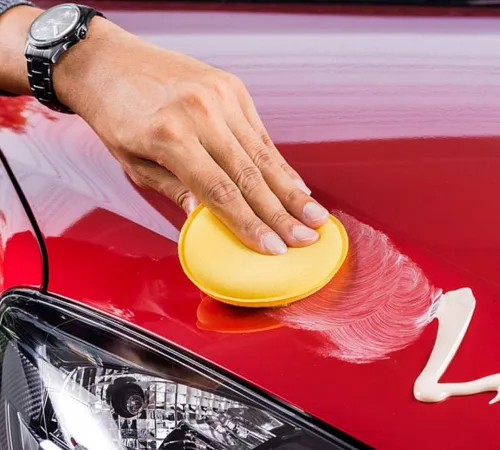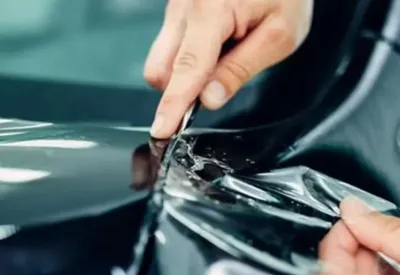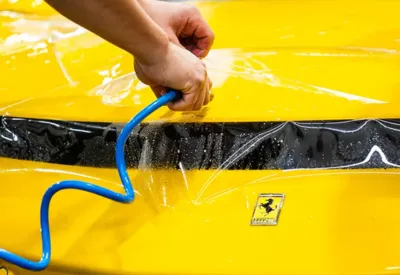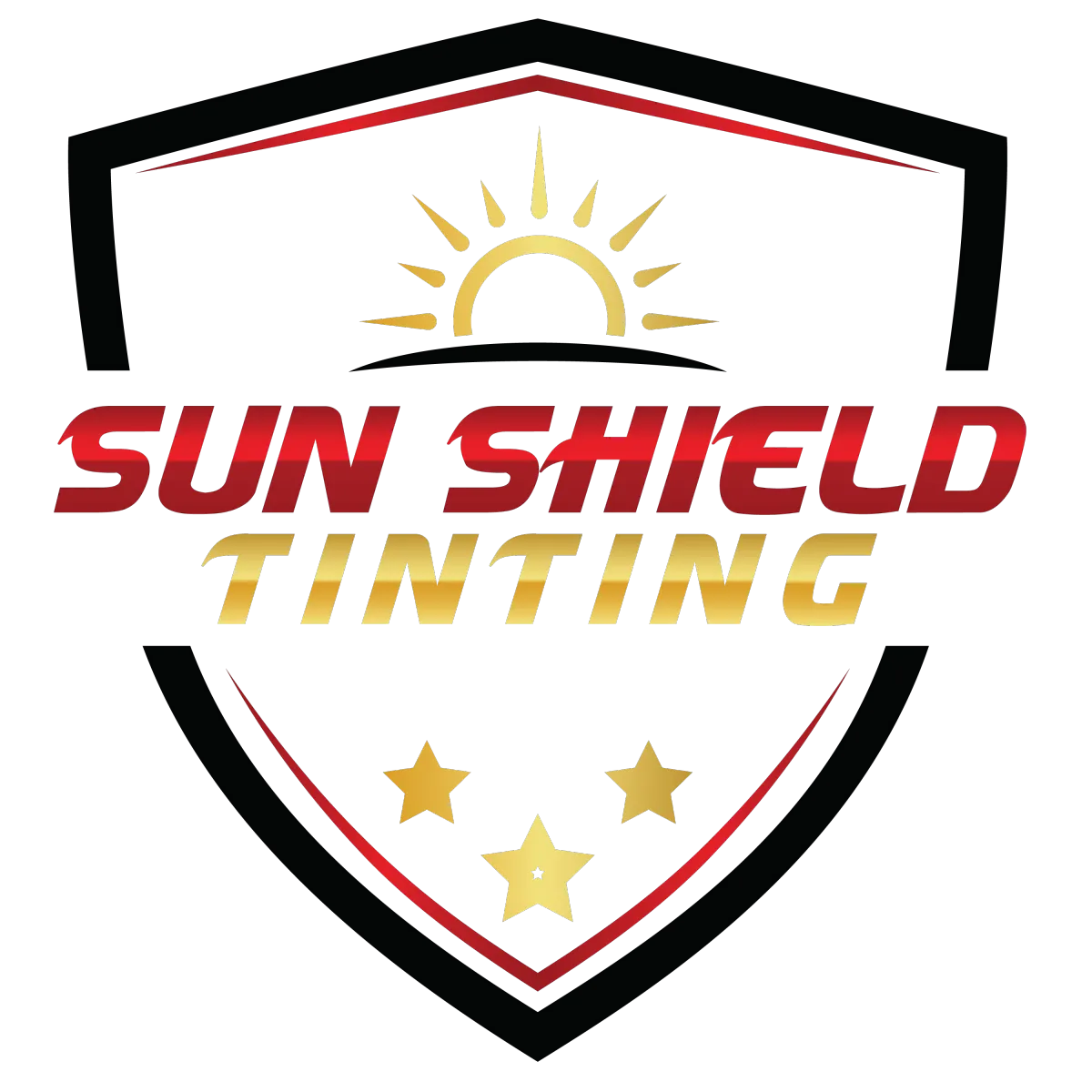Maintain Car Gloss with Paint Protection Film
Maintain Car Gloss with Paint Protection Film
Paint Care
Why Car Paint Gloss Fades Without Protection

Fresh factory paint looks mirror-smooth because the clear coat is flawless. Over months of driving, though, airborne sand, bug acids, bird droppings, and abrasive wash brushes scar the surface. Microscopic scratches scatter light, dulling color and reducing the crisp gloss that makes a car feel new.
Add intense Texas sunlight, and oxidation quickly turns scratches into chalky patches. Without a defensive layer, owners must polish regularly, thinning the clear coat each time. Dirt-laden wind can also pit the surface overnight. Gloss loss is unavoidable unless you shield the paint before the first swirl appears.

How PPF Consistently Preserves Your Car's Shine
Paint protection film, or PPF, sits on top of the clear coat like a second, sacrificial skin. The polyurethane layer absorbs rock chips and wash scratches that would cut into paint, keeping the finish smooth. Because it is optically clear, the underlying color and metallic flake still pop, giving the car a wet showroom shine every day.
High-quality films and knowing the different grades of paint protection film also stop ultraviolet radiation from degrading the clear coat’s resins. By blocking UV and oxygen, PPF slows oxidation, the root cause of fading. The result is long-lasting gloss that requires minimal buffing. Self-healing elastomer in premium products even closes light marries when the film is warmed by the sun or a heat gun. Professional installation further ensures edge sealing and clarity that home kits rarely achieve.
How Self-Healing Film Repairs Scratches

Self-healing PPF contains a flexible top coat made of elastomeric polymers. Minor abrasions from washing or road grit distort the surface only temporarily. When the material heats to about 120°F, a temperature easily reached under summer sun, it flows back to its smooth state, erasing the marks without polishing.
This process is purely physical; no special sprays are required. Owners often notice swirl marks disappear after a hot day or a quick pass with warm water.
Self-healing PPF contains a flexible top coat made of elastomeric polymers. Minor abrasions from washing or road grit distort the surface only temporarily. When the material heats to about 120°F, a temperature easily reached under summer sun, it flows back to its smooth state, erasing the marks without polishing.
This process is purely physical; no special sprays are required.

The capability keeps the finish bright between detailed washes, reducing maintenance time and preserving thickness, because you are not cutting paint to remove light scratches by polishing.
Self-healing also hides small finger-nail scratches around door handles, an area notorious for dull patches. Traditional hand buffs in these recessed zones are tedious and risky. With PPF, the clear layer takes the abuse and then reforms, so the paint stays untouched. That means your car’s gloss remains even across panels and in high-contact areas. Over time, such consistency matters when you compare a protected handle recess against an unprotected one that has dulled to a chalky gray. Buyers notice these fine details during a resale inspection.
UV and Chemical Resistance Explained
Continuous sun in the South Plains sends UV photons deep into the clear coat where they break molecular bonds, creating chalky oxidation. Premium paint protection films incorporate UV inhibitors that block up to 99 % of this radiation, preventing early fade of rich colors like red and blue. The same barrier stops chemical fallout from etching the surface during stormy months.
Bug guts, acidic rain, and road salt sit on the film, not the paint, and they rinse away with gentle soap before they can stain. Because PPF is slightly hydrophobic, wash water sheets off, carrying grime with it. That means less scrubbing and fewer chances to grind particles that can dull gloss.
Essential Routine PPF Care and Cleaning Tips
Maintaining paint protection film is low-maintenance, but a smart routine keeps it crystal clear. Wait one week after installation before the first wash so the adhesive sets. Use a pH-neutral shampoo with a soft microfiber mitt. A high-pressure rinse loosens grit, letting your wash media glide over the tough yet flexible film.
Maintaining paint protection film is low-maintenance, but a smart routine keeps it crystal clear. Wait one week after installation before the first wash so the adhesive sets. Use a pH-neutral shampoo with a soft microfiber mitt. A high-pressure rinse loosens grit, letting your wash media glide over the tough yet flexible film.


Avoid automatic brushes that can scratch both film and paint. Instead, follow the two-bucket method and dry with a plush towel or filtered air. Quick-detail sprays formulated for PPF add slickness, reducing dust buildup and making washes faster while preserving the film’s glossy, glass-like finish.
Should a bug splatter or bird dropping bake onto the surface, soften it with warm water or a dedicated PPF cleaner rather than aggressive solvents. Lift residues with a microfiber cloth using light pressure. The film’s stain-resistant topcoat usually prevents discoloration, but prompt removal ensures acids never have a chance to yellow the urethane or dull the clear coat beneath. Inspect seams and edges during washes; if grime accumulates, use a soft detailing brush to free it so adhesive lines stay invisible.
Cost Versus Long-Term PPF Value
Upfront cost is the primary objection drivers cite when considering PPF, and debunking common myths about paint protection film helps put the price in perspective.. A full-front package can rival the price of a minor body repair, and a full-body wrap can exceed it. Yet repair bills recur. Each rock strike or door ding that chips the clear coat triggers repainting, color blending, and downtime. When the film absorbs that impact, the owner pays nothing further and continues driving.
Long-term value becomes clearer at trade-in time. Appraisers grade exterior condition first, and glossy, chip-free paint can add thousands to resale offers. Film also guards against fading, so even vibrant colors stay original, increasing appeal to private buyers. Considering vehicles typically change hands every five to seven years, many Sun Shield customers recoup the film’s price, or more, just once they decide to sell. That future higher payout effectively discounts the initial spend, making PPF one of the most economical visual upgrades available.
Comparing PPF, Wax, and Sealants
Traditional wax creates a temporary gloss boost by filling microscopic scratches, but it melts in Lubbock heat and washes away within weeks. Synthetic polymer sealants last a few months longer, yet they cannot stop rock chips or deep scratches. Both options also require ongoing applications, adding to the cost and risking marrying during buffing.
PPF, on the other hand, is a one-time installation that guards against mechanical and chemical damage for years. Its self-healing surface keeps gloss vibrant without repeated product layers. Maintaining it is as simple as a gentle wash. For drivers who care about appearance but dislike constant detailing, PPF offers a unique blend of durability and low effort that wax or sealants cannot replicate over demanding maintenance cycles.
Why Most Drivers Choose Sun Shield Installation
Proper PPF performance depends on a dust-free environment, precision plots, and skilled trimming around badges and sensors. The Sun Shield Lubbock team lays film inside a controlled bay, then uses software-cut patterns matched to every panel so edges tuck neatly and stay invisible. Factory-trained installers squeegee out moisture pockets and align seams so the wrap blends seamlessly with factory paint. That meticulous approach prevents lifting and cloudy spots over time.
Sun Shield backs each job with a written warranty honored by the film manufacturer, providing peace of mind well after you leave the shop. Staff members review care steps and invite owners back for free annual checks, catching edge lift before it spreads.
Get our latest news and promos


SATISFACTION GUARANTEED

UNPARALLELED SUPPORT
Sun Shield of Lubbock
Social Media
Payments Accepted







